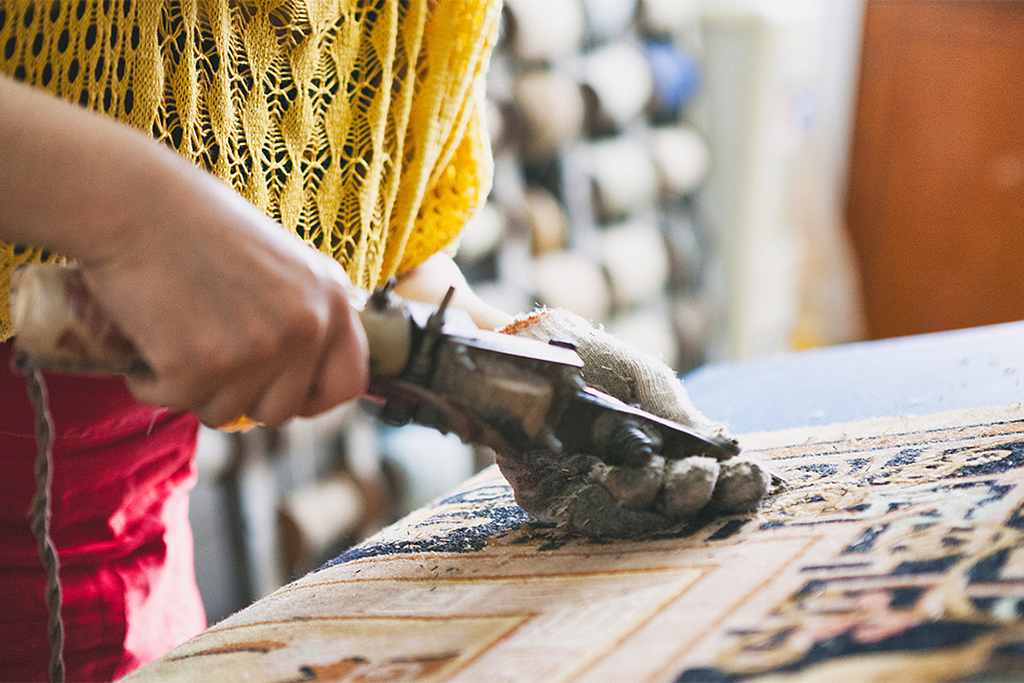Hand-Woven Pile Carpets: History and Tradition
hesen
![]() 1443
1443

Hand-Woven Pile Carpets: History and Tradition
Hand-woven pile carpets are cherished for their intricate craftsmanship, rich patterns, and deep cultural significance. As a traditional home decor item, these carpets not only hold a prominent place in history but also continue to be highly regarded in modern interior design. This article explores the origins, craftsmanship, cultural symbolism, and contemporary significance of hand-woven pile carpets.
1. Origins and Development of Hand-Woven Pile Carpets
The history of hand-woven pile carpets dates back thousands of years, with the earliest examples emerging in ancient Persia (modern-day Iran), Central Asia, and the Caucasus region. These areas, rich in natural resources and steeped in cultural traditions, provided fertile ground for the development of carpet-making techniques.
Carpets in their early form were made from animal hides and rough plant fibers. As weaving techniques advanced, finer materials such as wool and silk began to be used. Persia, in particular, is widely regarded as the birthplace of the art of carpet weaving. By the 6th century BCE, carpets were being woven with highly detailed patterns and designs that symbolized the wealth, status, and power of the ruling class.
Over time, carpet-making techniques spread to other regions such as Turkey, India, and China, each adopting and adapting the art to suit their own cultural preferences, resulting in distinct regional styles.
2. Traditional Craftsmanship of Hand-Woven Pile Carpets
Creating a hand-woven pile carpet is a labor-intensive and intricate process, typically involving the work of several artisans. The main stages of the process include material selection, dyeing, weaving, and pile tufting.
Material Selection: Traditional pile carpets are made from natural fibers, such as wool, silk, and cotton. Wool is the most common material used due to its elasticity and durability, while silk is reserved for more luxurious carpets, often used by royalty and nobility.
Dyeing: Natural dyes, derived from plants, minerals, and insects, are traditionally used to color carpets. These dyes produce rich, deep colors that are both vibrant and long-lasting. While synthetic dyes have become more common in modern carpet production, traditional weavers often continue to rely on natural dyes to preserve the authenticity and quality of their work.
Weaving and Pile Tufting: Weaving is the core technique in the creation of pile carpets. The base of the carpet is woven from cotton, wool, or silk, and the pile is formed by knotting or tufting yarns into the base material. The density, length, and texture of the pile vary depending on the design, contributing to the carpet’s luxurious feel and intricate detail.
Finishing: Once the carpet is woven, the pile is trimmed, and the surface is smoothed to ensure an even and uniform texture. This final step is critical in ensuring the durability and aesthetic appeal of the finished carpet.
3. Cultural Symbolism of Hand-Woven Pile Carpets
Hand-woven pile carpets are not only practical items for interior decoration, but they also carry deep cultural and symbolic meanings. The designs of carpets from different regions often reflect the spiritual beliefs, values, and connection to nature of the people who created them.
Persian Carpets: Persian carpets are known for their elaborate floral and geometric designs, often symbolizing harmony with nature and the spiritual world. These carpets have been symbols of wealth and refinement for centuries, reflecting the grandeur of Persian culture.
Turkish Carpets: Turkish carpets are known for their bold geometric patterns and vibrant colors. These carpets often feature motifs related to Islamic spirituality and folklore, and they are deeply tied to Turkish religious traditions.
Indian Carpets: Indian hand-woven carpets, particularly those made of silk, often feature intricate designs influenced by Hindu, Buddhist, and Islamic traditions. These carpets are rich in symbolism and often reflect the spiritual themes of their respective cultures.
4. The Modern Relevance and Preservation of Hand-Woven Pile Carpets
In the modern era, while mass-produced machine-made carpets dominate the market, hand-woven pile carpets continue to hold a place of prestige, particularly in high-end markets. Many contemporary interior designers and collectors still seek out hand-woven carpets for their artistry, craftsmanship, and cultural significance.
In recognition of the cultural value of hand-woven carpets, many countries and regions have taken steps to preserve and protect this traditional craft. For example, Iran, Turkey, and India have established programs to safeguard the heritage of carpet weaving, and UNESCO has recognized the traditional carpet-making techniques of various countries as part of its Intangible Cultural Heritage.
5. Conclusion
Hand-woven pile carpets are not just decorative objects; they are repositories of history, culture, and artistic expression. Through their intricate designs and use of natural materials, these carpets continue to reflect the values, beliefs, and aesthetics of the cultures that produce them. Whether displayed in royal palaces or modern homes, they remain a symbol of enduring craftsmanship and timeless beauty.





